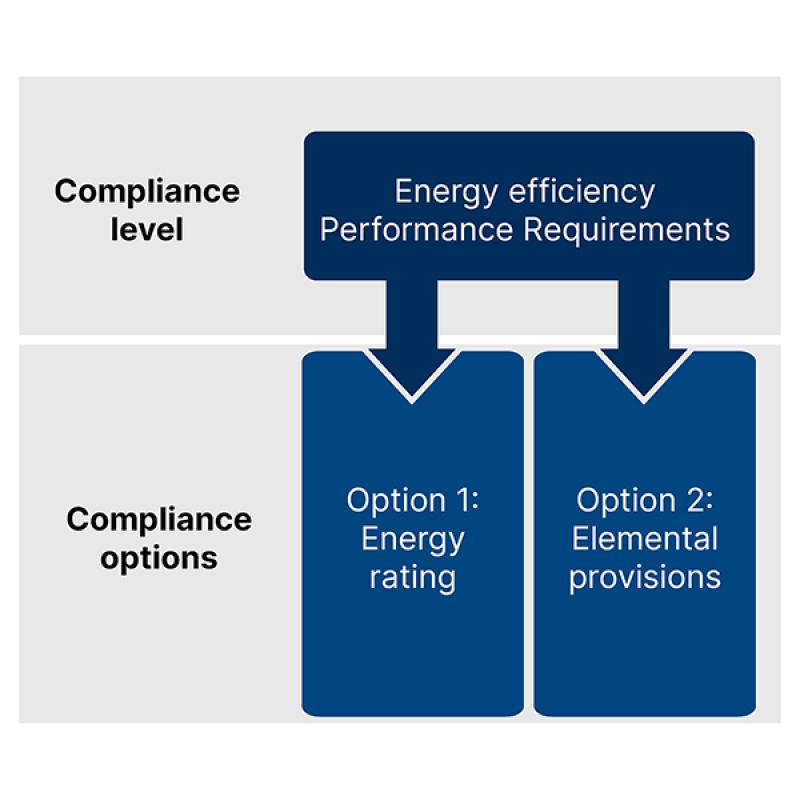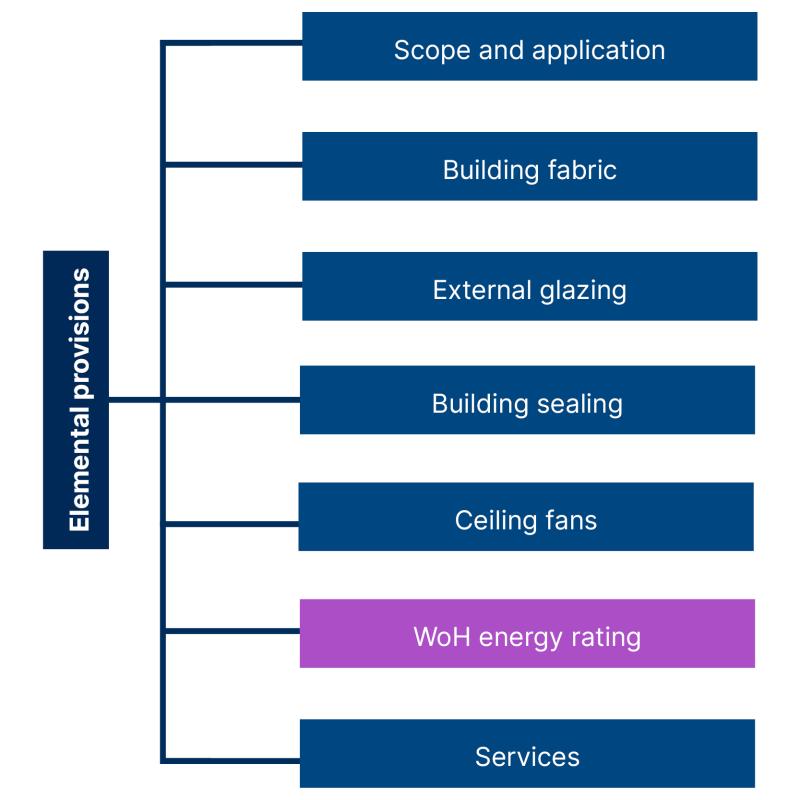You may have heard there are new whole-of-home (WOH) energy efficiency requirements for residential buildings in NCC 2022. But what does this actually mean?
Here’s an overview of the new WOH requirements and a summary of what you need to know.
There are new residential energy efficiency provisions for NCC 2022 that apply to houses (Class 1 buildings) and apartments (Class 2 sole-occupancy units and Class 4 parts of buildings).
A key component of the changes is new WOH requirements.
What are the mandatory requirements for houses and apartments?
Similar to NCC 2019, NCC 2022 contains two mandatory energy efficiency Performance Requirements for houses, H6P1 (2019: P2.6.1) and H6P2 (2019: P.2.6.2) in Volume Two. H6P2 has been expanded to include WOH requirements.
For apartments, there are 2 new Performance Requirements, J1P2 and J1P3 in Volume One. J1P3 covers the new WOH requirements.
What are the new WOH requirements?
Simply put, the new WOH requirements help to reduce the energy use (or energy value) of a new house or apartment.
Energy use is measured in terms of the societal cost of energy. This includes the following:
- energy costs to the building user
- costs to the environment in terms of greenhouse gas emissions
- time-of-use impact on energy networks.
How do the new WOH requirements work?
To reduce the energy use of a new house or apartment, the requirements holistically consider:
- the efficiency of fixed energy-using equipment, such as heating and cooling equipment, heated water, lighting, and pool and spa pumps
- on-site renewable energy generating systems, such as rooftop solar panels.
The new WOH requirements allow trading between the efficiency of energy-using equipment, as well as offsetting through energy generated onsite.
Together, this approach allows flexibility and enables cost-effective solutions to reduce overall energy consumption.
The WOH requirements for apartments are slightly less stringent than those for houses.
What compliance options are available?
There are 2 existing main compliance options for houses now expanded to incorporate new WOH Deemed-to-Satisfy (DTS) Provisions. These options are shown in the diagram.

Similar options are available for apartments.
Other compliance options available are Performance Solutions developed from first principles and Verification Methods. Refer to the ABCB website or the NCC for more information.
Compliance option 1: Energy rating
The intent of this method is to provide a compliance pathway that utilises Nationwide House Energy Rating Scheme (NatHERS) software, supporting the development of unique and optimised solutions.
This compliance option is located:
- for houses, in the DTS Provisions of Volume Two H6D2(1)(a) and H6D2(2)(a)
- for apartments, in the DTS Provisions of Volume One J2D2(2)(a) and J2D2(3)(a)(ii), (b) and (c).
The following figure shows the requirements that form the energy rating compliance option. To meet the WOH requirements using this option, a WOH energy rating is required and is shaded purple below.
For houses, the details are contained in Clause 3 of Specification 42 in Volume Two, and require a WOH energy rating ≥ 60 using a NatHERS software tool.
For apartments, the details are contained in J3D15 of Volume One and require a WOH energy rating ≥ 50 using a NatHERS software tool.
More information on how to comply with a WOH energy rating is available from the NatHERS website.
Compliance option 2: Elemental provisions
This option provides a prescriptive approach to complying with the housing energy efficiency Performance Requirements. The elemental provisions are in the DTS Provisions and when followed in their entirety form a DTS Solution i.e. meet the Performance Requirements.
This compliance option is located:
- for houses, in the DTS Provisions of Volume Two, H6D2(1)(b) and H6D2(2)(b), and
- for apartments, in the DTS Provisions of Volume One, J2D2(2)(b) and J2D2(3)(a)(i), (b) and (c).
The following figure outlines the relevant requirements that form the elemental compliance option. To meet the WOH requirements using this option, compliance with the WOH energy usage requirements is required. This is shaded purple in the figure below.

The WOH energy usage provisions are located:
- for houses, in 13.6.2 of the ABCB Housing Provisions
- for apartments, in J3D14 of Volume One.
Compliance
To comply, the energy usage of a proposed house or apartment (Step 2) must be equal to or less than energy use budget (Step 1). A series of calculations are required to determine compliance.
Step 1 - Energy use budget
The energy use budget (allowance) is based on the floor area of the house or apartment and its location.
Step 2 - Proposed energy usage
The energy usage of a proposed house or apartment is calculated using a number of factors using details of the following:
- floor area of the house or apartment
- main heating and/or cooling equipment
- main water heater
- swimming pool
- spa
- on-site photovoltaics.
The factors are located in a new standard, the ABCB Standard for Whole-of Home Efficiency Factors and a series of lookup tables in the NCC.
Available calculator
To assist determining compliance, a Whole-of-Home calculator is available that automates the calculations required.
Where can I find more guidance?
Our resource library and news section are a good place to start if you’re looking for more support and guidance on energy efficiency.
This article was updated on 6/04/2023